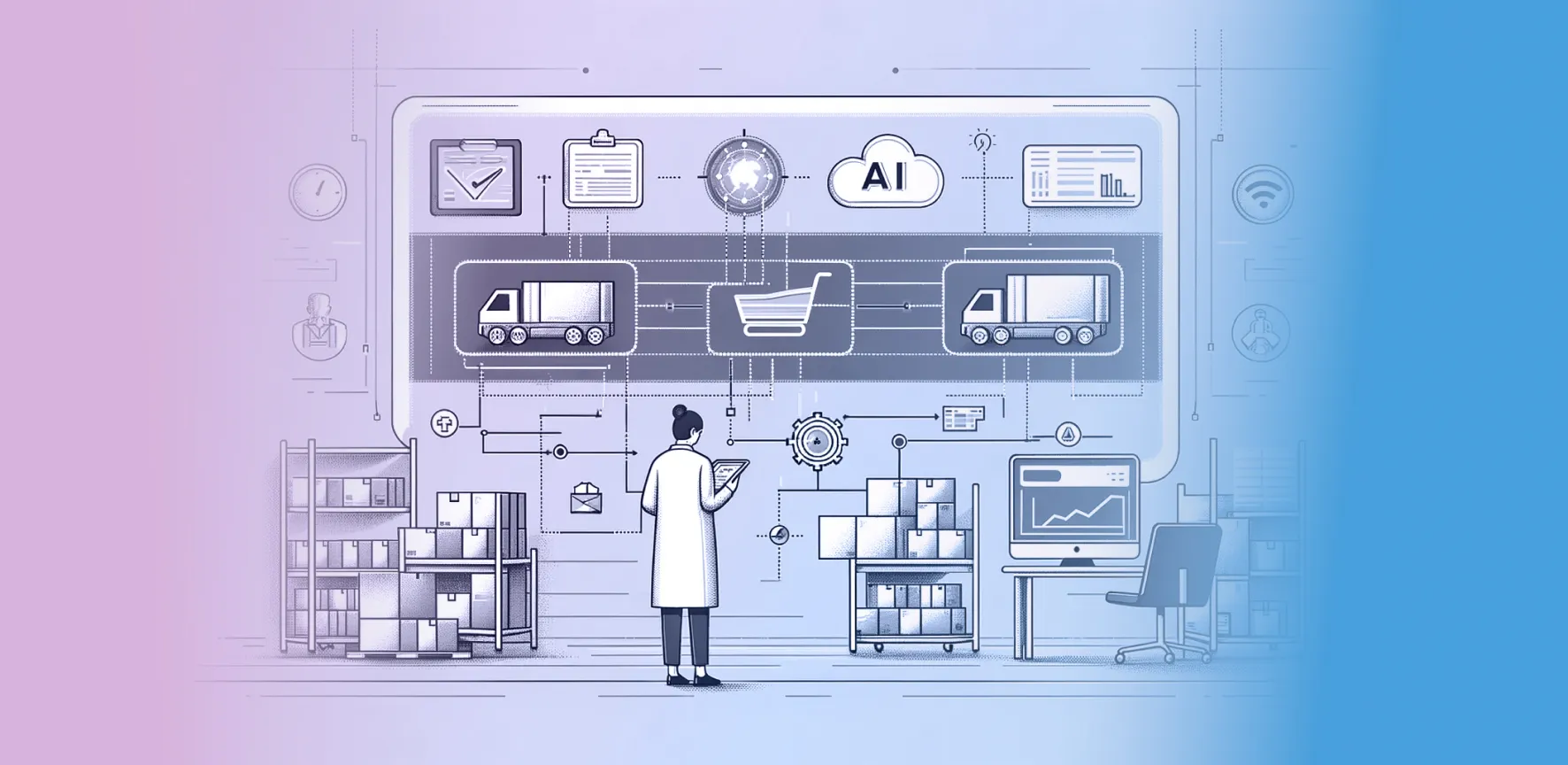The Next Era of MedTech Operations: How AI is Transforming Medical Device Logistics

For years, medical device logistics has depended on experience, spreadsheets, and long hours of coordination to keep surgical cases on track. The process has worked, but often at the expense of efficiency, visibility, and scalability. As procedure volumes rise and supply chains become more complex, operations leaders are asking the same question: how can logistics move from reactive to proactive?
Artificial intelligence (AI) is beginning to offer an answer. By learning from the data that medical device teams already generate—case patterns, regional inventory flow, shipment timelines, and hospital trends—AI is poised to help companies plan smarter, move faster, and make better-informed decisions. And the most interesting part is that many of these improvements are already within reach today, powered by the same digital foundations that modern platforms like WebOps enable.
Predictive Inventory and Loaner Kit Optimization
Loaner and consignment sets are among the most valuable assets medical device companies manage, yet they are also some of the hardest to forecast. Too often, kits sit idle in one region while another team scrambles to source an extra set for a last-minute case.
AI and machine learning models are showing how this can change. By analyzing case histories, surgeon preferences, and seasonality, these systems can predict where demand is likely to arise and how to position inventory accordingly. Platforms like WebOps already help manufacturers take the first step by centralizing case and field inventory data, giving teams the visibility and accuracy needed to make those predictive models possible.
The path toward predictive logistics does not begin with algorithms; it begins with clean, connected data.
Dynamic Routing and Logistics Automation
Every day, logistics teams face the challenge of moving instruments, implants, and trays between hospitals, reps, and sterilization sites under tight deadlines. When plans shift or weather disrupts deliveries, static routes fall apart, and costly overnight shipments follow.
AI-powered routing models are beginning to change that. These systems continuously calculate the most efficient paths by considering case urgency, courier availability, and real-time traffic conditions. Integrated with transport networks, they can even suggest faster or more cost-effective options as schedules evolve. With WebOps, those routing decisions are supported by real-time case and shipment data already flowing through the platform, helping operations teams respond faster and reduce courier spend even before full automation takes hold.
Intelligent Asset Tracking
Between hospitals, distribution centers, and sterilization sites, valuable trays and instruments are constantly in motion and occasionally lost in transit. Traditional barcode systems catch these issues after the fact.
By combining IoT tracking technologies such as RFID, BLE, and GPS with pattern recognition, advanced systems can detect anomalies early—for example, identifying trays that have not moved in two days or sets returning incomplete from sterilization. WebOps integrates these data points into a unified view, allowing logistics teams to act on exceptions immediately and maintain full visibility of assets throughout their lifecycle.
The result is greater asset utilization, fewer missing instruments, and faster turnaround between surgeries—benefits already being realized through connected logistics systems today.
Smarter Surgical Case Scheduling
Case scheduling has always been one of the most unpredictable parts of the supply chain. Requests come in at the last minute, changes ripple across regions, and communication often happens over phone calls and text threads.
AI offers a vision for smoother coordination, using historical patterns and hospital utilization data to predict likely case demand and pre-position resources. WebOps already simplifies much of this coordination today, connecting hospital schedulers, reps, and logistics teams in one workflow. As AI evolves, it will enhance the same foundation WebOps has already built—turning communication into prediction.
System Integration for Full Visibility
AI does not replace operational systems—it learns from them. The real transformation comes from connecting the data that lives across ERP, CRM, hospital scheduling, and logistics platforms into a single source of truth. That’s the role WebOps plays today, integrating case, shipment, and inventory data across departments to create a complete operational picture. Once that foundation is in place, predictive and automated decisions naturally follow.
Even before AI enters the equation, integration itself delivers massive value: real-time visibility, fewer hand-offs, and coordinated decision-making across teams. It is the foundation upon which true intelligent operations will be built.
Building the Foundation for What Comes Next
AI is reshaping how medical device companies think about logistics, but it is not a distant future. Many of the gains AI promises begin with capabilities already achievable today: real-time tracking, integrated scheduling, and analytics that turn operational data into action.
WebOps provides the infrastructure for this shift—helping manufacturers and distributors connect data, standardize workflows, and gain the visibility needed to move from chaos to control. As the industry continues to evolve, AI will enhance what connected platforms like WebOps have already made possible: smarter, faster, more predictable medical device logistics.


